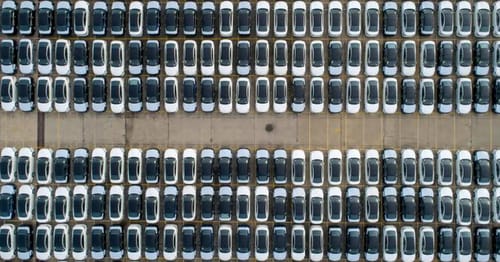 |
| The journey of mankind from the horse to the electric car |
Since the dawn of civilization, people have needed transportation. In the 1890s, major cities in the Western world relied primarily on horse-drawn carriages. It's a form of transportation that's been in use for thousands of years, when electric cars were out of the question.
At that time, horse-drawn carriages were popular and more than 300,000 Hassan worked on the streets of London. There are 150,000 in New York. Each horse produces up to 10 kg of feces per day.
It is difficult to get rid of horse manure, but it is the only solution. However, because of the risks this feces poses to human health and the environment, difficulties have been compounded. Then the long-term solution, which took many years to complete, was to abandon horses and use engines instead.
cars in history
In the first concept, people switched from using horses to using cars. As some might think, this transition is neither easy nor easy, but rather difficult and has many aspects. Cars have changed since the beginning of our world, long-distance travel has become easier, and oil has become the main currency.
There is no doubt that horses cause health and environmental problems due to the faeces or urine that horses produce. On the other hand, the risks posed by cars are not minimal. On the contrary, its harm is not as pronounced as with horses. We are talking about exhaust gases, especially carbon dioxide.
As early as 1897, the best-selling car in the United States was actually an electric car. This is contrary to what some people think. Electric cars do not appear suddenly, but products that people have worked hard to develop and perfect for over 100 years.
On the other hand, steam cars also saw strong sales. At the time, this was at the expense of electric cars. In 1900, 1,681 steam cars were sold, compared to 1,575 electric cars and 936 gasoline cars.
Electric cars are older than we thought
The situation continues to evolve and improve, over time, more and more people buy their cars, whether electric, traditional or steam, but over time women become the main users of electric cars.
The reason is that electric cars are more suitable for short trips and long walks. In 1912, two cars, the Detroit Electric and the Waverly Electric, were introduced, with unique designs and more passenger space.
One curious fact is that Henry Ford, founder of Ford and one of the pioneers of gasoline cars, bought his wife an electric car from Detroit Electric instead of his company's gasoline car, probably because these cars have limited functionality.
Gasoline vehicles are becoming increasingly popular. At the same time, electric car manufacturers are focusing on the female market, which is only 15% in Los Angeles and only 5% in Tucson.
At the same time, Henry Ford confirmed rumors that he would work with Thomas Edison to develop electric cars. However, the driving distance for these cars is too short, which is their biggest mistake, which remains the case to this day.
Full control of normal cars
As we can see now, it is clear that electric cars were not able to compete with vehicles with internal combustion engines. Because the first cannot do what the second offers.
This also applies to me: both now and in the past, car buyers are reluctant to limit the maximum distance they can travel before they have to sit next to the car for a while to charge it.
The performance level of American cars has gone too far. In 1960, American cars relied on powerful V8s, while European and Japanese cars relied on four-cylinder engines.
Excessive power of these engines led to increased fuel consumption, which is normal. The first crisis of this high consumption during the war occurred in October 1973 when the Arab world cut off oil supplies to the United States.
The return of electric cars
Time passed, and the problem still lay in batteries and their technologies, until we reached the nineties and rechargeable lithium-ion batteries were invented. It is currently used everywhere including smartphones and laptops.
In 2003, two electric car geeks met and succeeded in designing a roadster called TZero, which relied on 6,800 batteries and was able to accelerate from 0 to 60 mph in just 4 seconds. With the ability to walk 250 miles.
The creation of Alan Cocconi and Tom Gage was amazing. And here, Tesla was founded, to use these technologies commercially.
In this modern time, the battery problem has been relatively solved, electric cars have increased in the number of kilometers that they can travel on a full charge and have reached unprecedented numbers.
The spread of electric cars and their replacement for traditional cars at the present time depends on several factors, namely the decrease in their price over time, the spread of car charging stations, the increase in charging speed, and the increase in the distance traveled on a single charge, which are stages of development that will undoubtedly require many years.